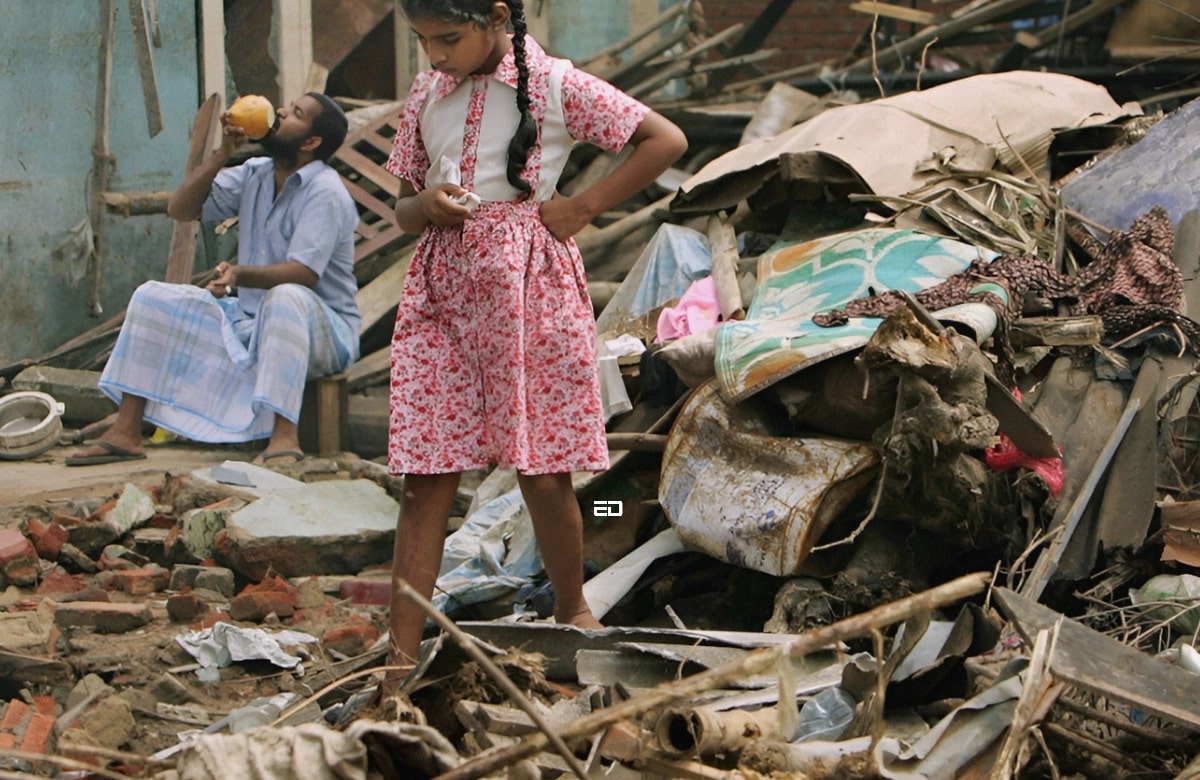Back in Time is ED’s newspaper-like column that reports an incident from the past as though it has happened just yesterday. It allows the reader to relive it several years later, on the date it had occurred.
December 26, 2004
In a calamity that unfolded, the coasts of several South and Southeast Asian countries were ravaged by an unprecedented tsunami, triggered by a powerful undersea earthquake off the coast of Sumatra, Indonesia. Striking at 7:59 A.M. local time, the earthquake registered a magnitude of 9.1, setting in motion a series of immense ocean waves that wreaked havoc across the Indian Ocean.
Over the following seven hours, the tsunami unfolded its destructive force, reaching coastal areas as far away as East Africa. Reports indicate that the waves reached staggering heights of up to 30 feet (9 meters) or more upon striking the shorelines, leaving behind a scene of unparalleled devastation.
The aftermath of this catastrophe stands as one of the largest natural disasters in recorded history. Preliminary estimates suggest a staggering death toll of at least 225,000 people across a dozen countries. Among the worst-hit nations are Indonesia, Sri Lanka, India, the Maldives, and Thailand, each facing massive damage and loss.
Indonesia, particularly northern Sumatra’s Aceh province, bore the brunt of the disaster, with officials estimating a death toll exceeding 200,000. Tens of thousands of lives were lost or reported missing in Sri Lanka and India, including a significant number from the Indian Andaman and Nicobar Islands territory. The low-lying island nation of Maldives reported over a hundred casualties and immense economic damage.
The impact extended beyond the affected regions, with several thousand non-Asian tourists reported dead or missing. Relief efforts faced significant challenges due to the lack of essential resources, inaccessible remote areas, and the destruction of infrastructure, compounded by ongoing civil conflicts.
Read More: Back In Time: 98 Years Ago Today, Indian Revolutionaries Launched “Kakori Train Action” Against British Atrocities
Post Scriptum
The tragic aftermath reveals not only the immediate loss of life and infrastructure but also points to long-term environmental damage. Villages, tourist resorts, farmland, and fishing grounds were either demolished or submerged with debris, bodies, and plant-killing salt water.
The lack of essential resources, clean water, and medical treatment in the affected areas compounds the already immense challenge faced by relief workers.
As we grapple with the magnitude of this disaster, questions arise about our preparedness for such unprecedented events.
The environmental and human toll underscores the urgent need for global collaboration in disaster preparedness and response. Today, we mourn the lives lost and reflect on the enduring impact of a tragedy that unfolded as if it happened just yesterday.
Image Credits: Google Images
Sources: NDTV, WION, Britannica
Find the blogger: Pragya Damani
This post is tagged under: Tsunami, Natural Disaster, Indian Ocean, Earthquake, South Asia, Southeast Asia, Disaster Response, Global Solidarity, Humanitarian Efforts, Environmental Impact, Emergency Relief, Crisis Management, History, Remembrance, Global Collaboration
Disclaimer: We do not hold any right, copyright over any of the images used, these have been taken from Google. In case of credits or removal, the owner may kindly mail us.
Other Recommendations:
Back In Time: India Becomes Sixth Country To Launch Nuclear Submarine Today
































